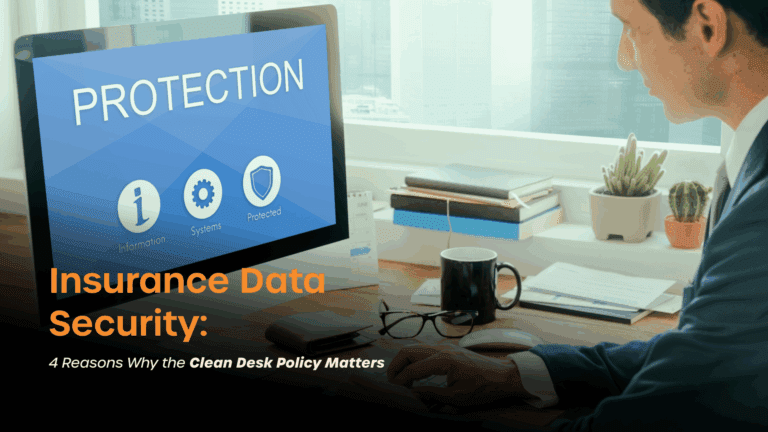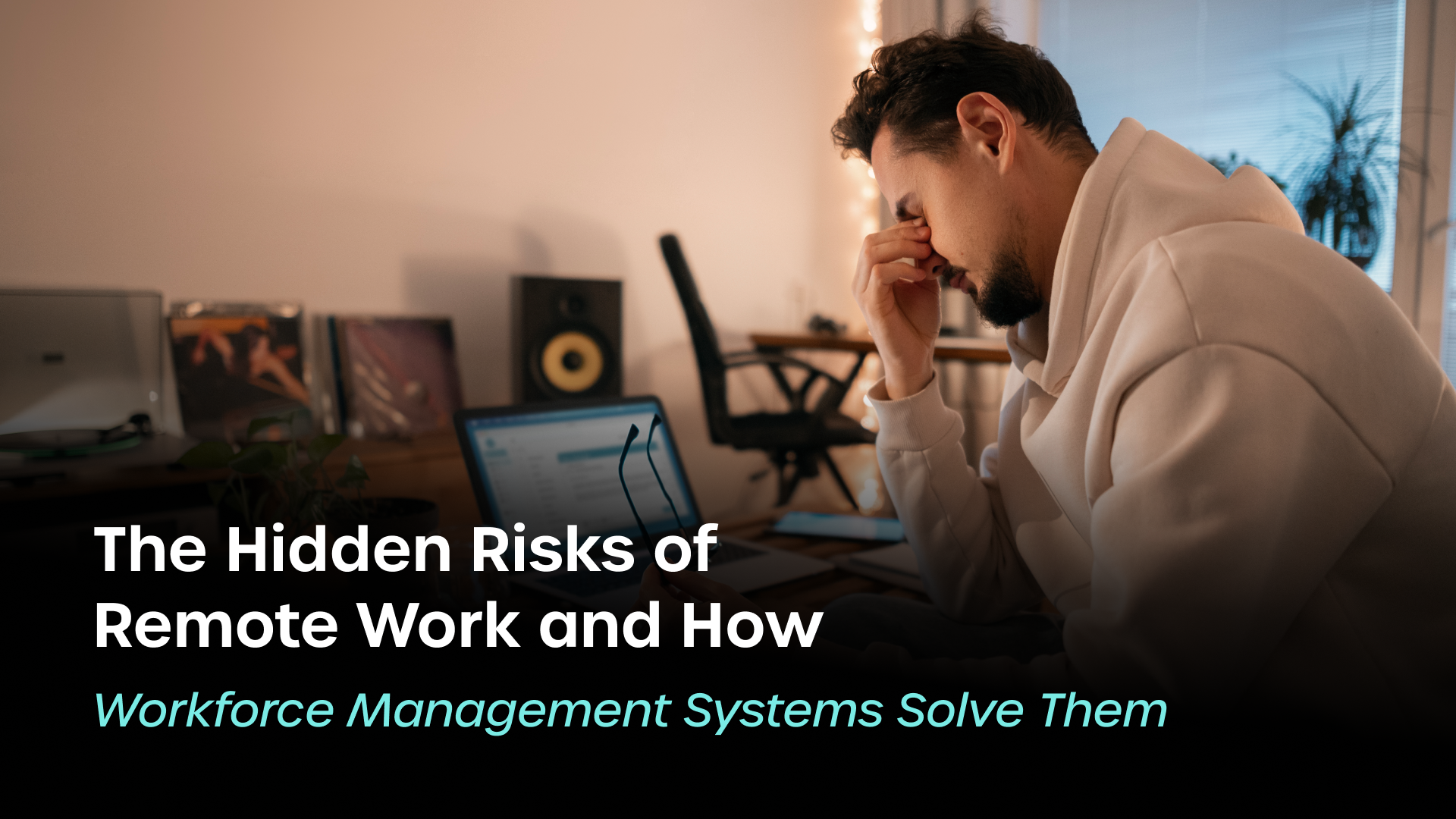
The Hidden Risks of Remote Work and How Workforce Management Systems Solve Them
- Rajnish Kumar
- 8 mins

Summary
Remote work has become a normal part of business life, but it isn’t without challenges. Many companies quickly discovered that flexibility comes with hidden risks — from data security issues to compliance gaps.
Remote work has become a normal part of business life, but it isn’t without challenges. Many companies quickly discovered that flexibility comes with hidden risks — from data security issues to compliance gaps. That’s where workforce management systems play a vital role. They help organizations protect sensitive information, maintain compliance, and keep distributed teams running smoothly without unnecessary risks.
Why Remote Work Brings Unique Risks
When employees were all in the office, IT leaders and managers had more control. Devices stayed on the company network, access could be restricted physically, and compliance was easier to enforce. But with people working from home, shared spaces, or even different countries, the risks have multiplied.
Some of the biggest hidden risks include:
- Data Security Gaps
Employees might download files to personal devices or use unsecured Wi-Fi connections. - Compliance Challenges
Regulations like HIPAA, GDPR, and SOC 2 don’t relax just because staff are remote. Without proper systems, proving compliance becomes a nightmare. - Limited Oversight
Managers often struggle to know if policies are being followed, since traditional tools don’t provide visibility into remote operations. - Inconsistent Practices
Different teams may adopt different tools or workflows, creating gaps that increase the chances of errors or security incidents.
These risks can lead to costly fines, reputational damage, and lost client trust if not addressed.
Why Traditional Tools Aren’t Enough
Many organizations already use HR platforms or time-tracking tools, but these fall short. They aren’t designed to manage compliance and security risks. That’s why CIOs and compliance leaders are turning to workforce management systems that combine oversight with data protection.
Unlike simple scheduling tools, these systems can integrate compliance features, create audit trails, and provide real-time visibility into how company resources are being used.
How Workforce Management Systems Solve These Challenges
1. Protecting Sensitive Data
Modern systems go beyond attendance tracking. With features like enhanced data protection, they prevent unauthorized downloads, file transfers, or data leaks — a critical safeguard for industries like healthcare, finance, and legal services.
2. Creating Compliance-Friendly Records
When regulators ask for proof, having detailed activity logs is essential. Workforce systems automatically generate this documentation, saving hours of manual tracking and reducing the stress of audits.
3. Offering Centralized Oversight
Instead of juggling multiple platforms, CIOs and managers get a single dashboard to view workforce activity. This reduces blind spots and ensures policies are applied consistently across teams.
4. Supporting Remote Employee Management
For companies managing distributed teams, these systems act as remote employee management software, providing both structure and transparency. Teams can stay aligned without sacrificing security or compliance.
5. Partnering with Reliable Vendors
Not all workforce management software vendors are the same. The best ones understand the challenges of regulated industries and design solutions that scale with the business.
How RemoteDesk Helps Organizations Reduce Risks
Among available solutions, RemoteDesk stands out because it is designed with remote-first businesses in mind. Here’s how it addresses the hidden risks of remote work:
- Enhanced Data Protection (eDLP): Prevents unauthorized sharing, screenshots, or misuse of sensitive files.
- Audit-Ready Reporting: Detailed logs and reports make it easy to prove compliance during audits.
- Unified Workforce Oversight: Instead of buying separate tools, RemoteDesk combines the strengths of workforce management systems with compliance-focused monitoring.
- Remote-Friendly Design: Built specifically for remote and hybrid teams, not retrofitted from office-based tools.
- Vendor Reliability: In a crowded market of workforce management software vendors, RemoteDesk has earned trust from industries like BFSI, healthcare, legal, and call centers.
The Human Side of Managing Remote Risks
Some leaders worry that oversight tools can feel like surveillance. But when framed correctly, they create fairness and accountability rather than mistrust. Employees know that compliance rules are applied consistently, and that data is being protected for everyone’s benefit.
In fact, many organizations find that using systems like RemoteDesk reduces anxiety among staff. Instead of worrying about making mistakes, employees can focus on their work knowing the system will handle compliance requirements in the background.
Mistakes to Avoid
While adopting a workforce system is smart, leaders should watch out for common mistakes:
- Choosing Generic Platforms
Basic HR or time-tracking software isn’t built for compliance-heavy industries. - Ignoring Scalability
What works for 100 employees might fail at 1,000 if the software isn’t flexible. - Forgetting Integration
A CIO’s role is already complex; tools should integrate with existing systems instead of adding silos. - Overlooking Vendor Expertise
Many workforce management software vendors claim to support compliance, but only a few have proven experience in regulated industries.
Looking Ahead
Remote work is here to stay. The risks won’t disappear, and in many cases, they will grow as regulations tighten and data privacy expectations rise. Forward-thinking CIOs are preparing for:
- AI-driven compliance monitoring that detects risks instantly.
- Stricter data regulations across industries and countries.
- Higher client demands for transparency and security proof.
By adopting robust workforce management systems now, organizations can stay ahead of these changes instead of scrambling later.
Final Thoughts
Remote work has opened doors for businesses, but it has also created risks that can’t be ignored. From data leaks to compliance failures, the challenges are real — and costly. The good news is that workforce management systems provide a clear solution.
By combining the oversight of remote employee management software, the record-keeping of compliance tools, and the reliability of trusted workforce management software vendors, RemoteDesk gives leaders the confidence to manage distributed teams securely.
For CIOs, compliance heads, and business leaders, the choice is simple: adopt systems that reduce risk and protect trust. With RemoteDesk, organizations can embrace remote work without sacrificing compliance or security
1. What is RemoteDesk?
2. How does RemoteDesk ensure compliance with regulations like PHI, HIPAA & PCI DSS?
3. Can RemoteDesk integrate with our existing security and productivity tools?
4. How does RemoteDesk handle remote and hybrid workforce management?
5. What types of analytics and reporting does RemoteDesk offer?
Get Started Today
Sign up in minutes. Secure your remote
workforce with confidence.
See how RemoteDesk makes compliance and data protection effortless.




